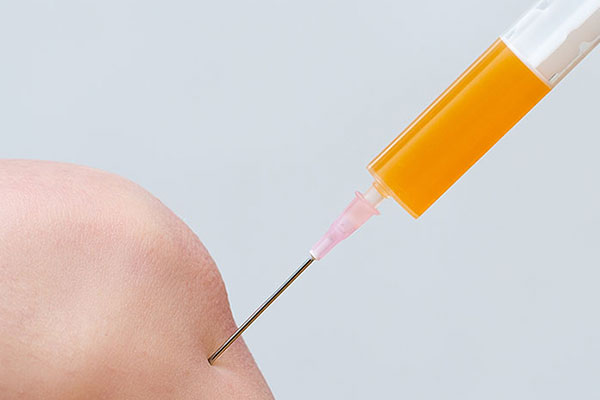


What is PRP treatment
Platelet rich plasma is a simple procedure gaining popularity in recent times. In this treatment elements, naturally found in blood as cells or proteins, that are known to promote healing of connective tissues or to inhibit degradative enzymes is used. It is used to treat musculoskeletal disorders such as tendon injuries, osteoarthritis, and discogenic pain.
Mechanism of ligament and joint injury causing pain
Injurious stimuli cause a protective vascular connective tissue reaction called “inflammation”. Inflammation is a complex dynamic protective response to cell injury, infection, or trauma, in the vascularized tissues. Inflammation of prolonged duration (weeks or months) is associated histologically by lymphocytes and macrophages, proliferation of blood vessels, fibrosis and necrosis. Active inflammation leads to proteins secreted in to damaged tissue causing pain
How PRP treatment cures musculoskeletal pain
Following injection, alpha granules from platelets, various growth factors, plasma proteins present in the plasma activates the process of repair, healing and regeneration of the damaged tissue by diluting, destroying and activating a sequential cascade of molecular events that leads to repair, healing, and reconstituting the damaged tissue.
Steps in PRP preparation and administration
Blood from a patient is drawn in the same way as for blood test, plasma rich in platelets is prepared by centrifugation of the collected blood. Under strict antiseptic precaution, platelet rich plasma is injected into the target. The procedure duration is 1 to 2 minutes. This process is repeated three times (once every month) for better results
Benefits of PRP for Knee Pain
Though Success rates of treatment were not reported,PRP treatment offers various benefits as follows:
-
PRP treatment is a minimally invasive day care procedure
-
It is an Ultrasound guided intervention
-
No major side effects
-
No allergic reactions as patients own blood is used
-
Cost effective
FAQ questions
- Osteoarthritis - the loss of the smooth cartilage that covers the ends of bones
- Tendinitis - pain arising from tendon tissue that connects muscle to bone
- Cranial treatment can also be of help to people with long-term pain and ailments and for those who have failed to obtain relief from other treatments.
- Influence cell growth
- Control bone formation
- Stimulate the development of new blood vessels
- Modulate tissue inflammation
PRP injections can often be arranged within two weeks of an initial consultation. They only take around 30 minutes to perform.
The science and understanding of platelet-rich plasma is still developing and it may be appropriate for some conditions more than others. There is scientific evidence that states PRP helps pain from knee arthritis and tennis elbow (lateral epicondylitis). It’s also often used in other conditions, but the outcome may be less certain.
Many patients begin to feel relief from symptoms from twelve weeks onwards. In a recent study of patients receiving PRP for tennis elbow, the treatment was successful in over 80 per cent of patients 24 weeks after their injection.
A blood sample is taken from the arm in the same way as having a blood test at a doctor’s surgery. The blood is spun in a machine ( centrifuge) that separates the platelet-rich portion of the blood. This is then injected into the painful area or joint and an adhesive dressing is applied. No general anaesthetic is required, although local anaesthesia before the PRP injection can reduce discomfort.
PRP is appropriate to consider when the pain has persisted despite trying over the counter analgesia (pain relief) and avoiding activities that provoke pain for six weeks. PRP is most helpful when used as part of a comprehensive program to improve musculoskeletal health. This includes quitting smoking, weight loss, activity modification and musculoskeletal physiotherapy with a long term commitment to rehabilitation and exercise.
Book an Appointment


